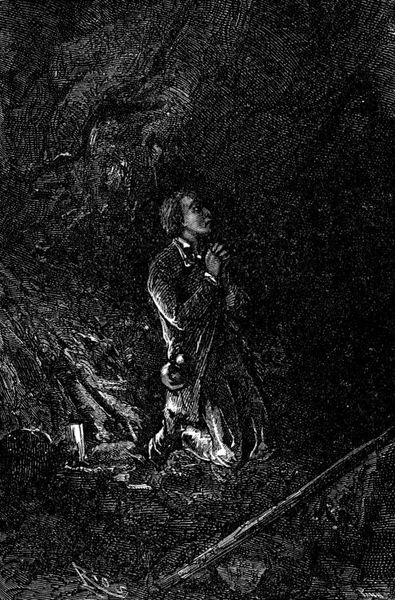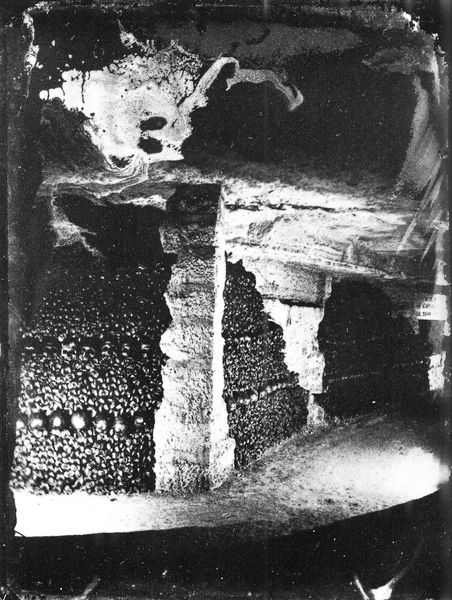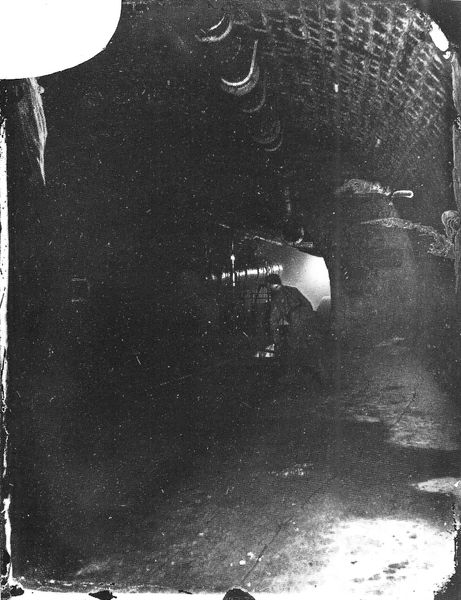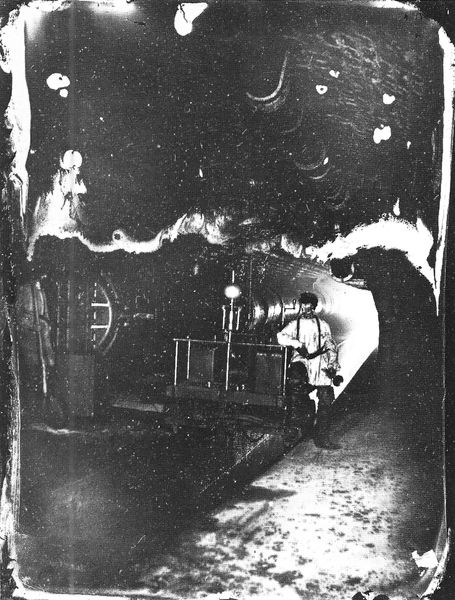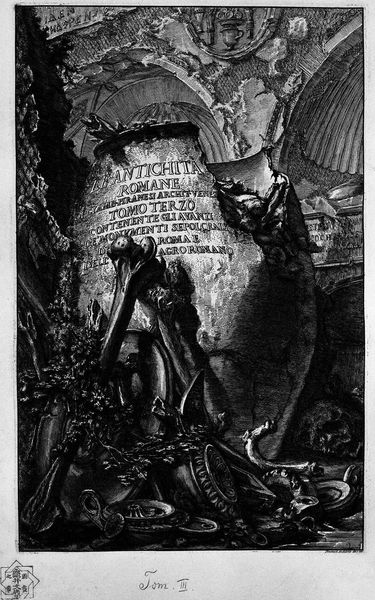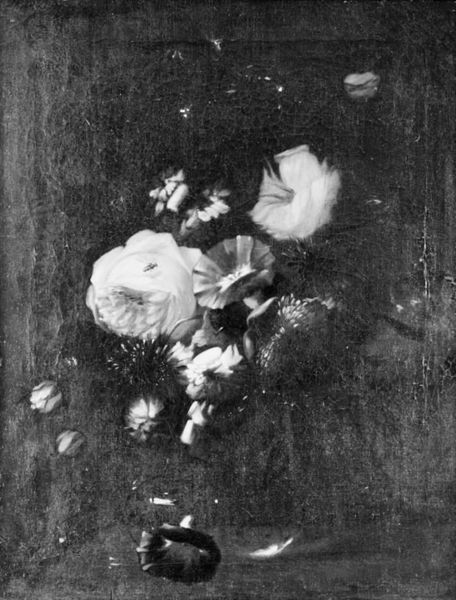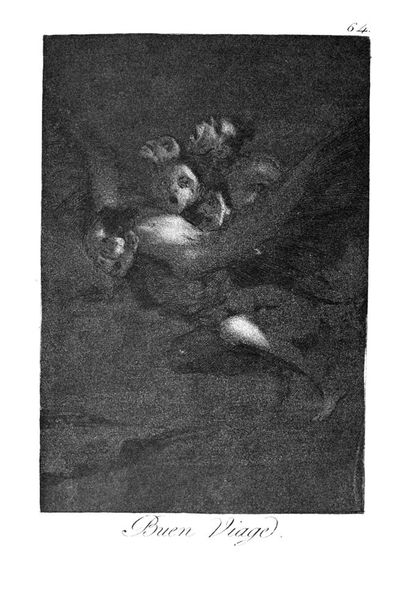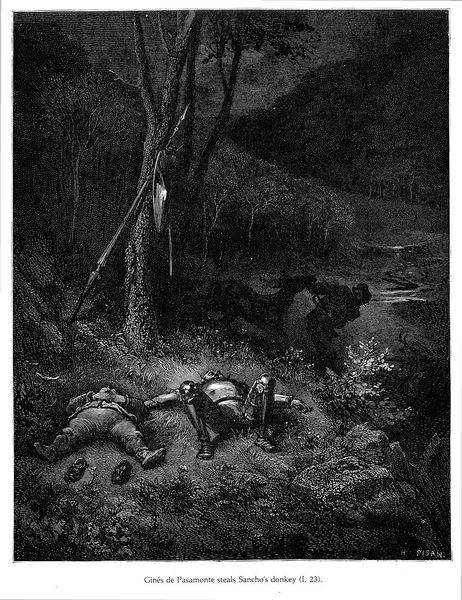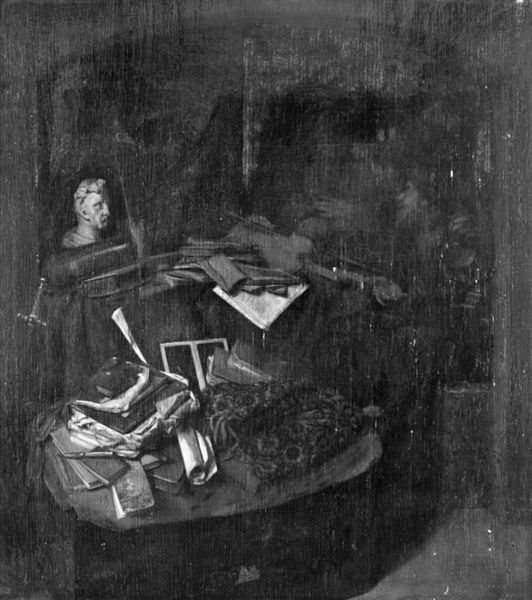
Copyright: Public domain
This photograph of the Catacombs of Paris was captured by Felix Nadar, a pioneer of aerial and portrait photography. Nadar innovated electric lighting to capture the cavernous ossuaries beneath the city, revealing a hidden world that speaks volumes about Paris's social history. The Catacombs, established in the late 18th century, became the final resting place for remains exhumed from overcrowded Parisian cemeteries. Nadar's photograph isn't just a record; it’s a statement on how urban spaces deal with the physical realities of death and urban growth. It reflects the 19th-century fascination with science and progress, as well as a growing awareness of public health issues. To fully understand this image, we need to delve into the archives of Parisian history: sanitation reports, cemetery records, and urban planning documents. Nadar's image thus urges us to reflect on how societies grapple with mortality, and the way institutions shape our understanding of life and death.
Comments
No comments
Be the first to comment and join the conversation on the ultimate creative platform.
